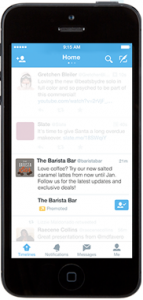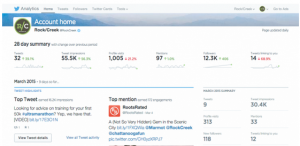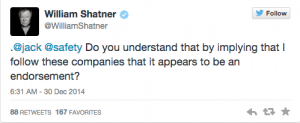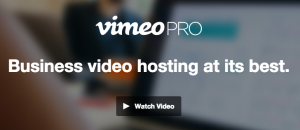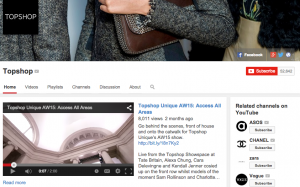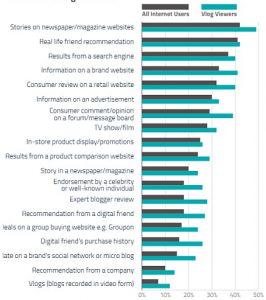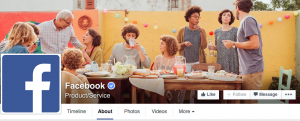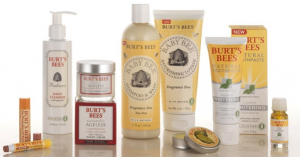Twitter Basics
If you don’t yet have a Twitter account, you almost certainly still would have heard about Twitter. Twitter enables anyone with an account anywhere in the world to express something in 140 characters from a range of topics including sports events, music, new films, TV series, daily events etc etc. I personally my favourite thing about Twitter would have to be following the comedy accounts, which regularly post ‘memes’ Using a hashtag enables people to connect and interact over similar topics of interest. There are numerous benefits of Twitter for personal use. In addition to being a social media tool, Twitter is also a valid marketing technique. Tweeting allows your business to interact with consumers and advertise new products/services/news. Read some of the benefits of having a Twitter Business Account.
If a consumer has a good experience with you, 64% are likely to tweet about it to all their followers and 70% are likely to spread your news to their followers by re-tweeting. Considering there are over 240 million active monthly users on Twitter, this is an exciting opportunity to spread the word of your business. Here is a guide to starting your Tweeting Strategy
(Twitter. 2014)
Millions of businesses use Twitter every day. But are you using Twitter to it’s full potential ?
Promoted Accounts & Promoted Tweets
Advertising on Twitter takes the form of promoted accounts and promoted tweets. Twitter (2015) describes its promoted accounts as ‘ad units that are included in Followers campaigns. They enable you to quickly gain relevant followers – 70% of whom provide free advertising through Retweets and 43% will make multiple purchases in the future.’
What is the difference between a promoted account and a promoted tweet?
Promoted accounts are used to increase followers, your account will be advertised to your desired target audience. Potential followers can be identified based on factors such as whether they follow your main competitors. More Details.
Promoted tweets are used to promote a particular announcement or message you want to spread to a wider audience, this allows for your tweet to be shown to people who do not currently follow you. This audience can be targeted via language targeting and general demographics. More details
(Luarion. 2014)
The Twitter analytics feature allows for you to identify which Tweets do well and display ;
- how many times you’ve Tweeted
- how many people have seen your Tweets, visited your profile, mentioned your @username or followed your account
- how many times people have shared links to your site
- your top Tweets and followers with the largest network in any given month (Benson. 2015)
So you can measure how you are doing and see what works best for your business.
This type of ‘conversion tracking’ allows for you to accurately measure your actions – to justify a budget and be smart when spending money on your digital marketing strategy. (Ganguly. 2015) Twitter can now also help you work out the ROI on your ads. Read more.
Twitter has a YouTube account with lots of videos about the different ways in which Twitter can be used specifically for business. To get your started – Promote your accounts step by step – Promote your tweets step by step
Benefits
|
Increased Followers |
The more followers you have, the bigger your brand’s ‘social capital’. Basically the more successful you will be on social media. This has been proven to positively correlate with financial performance. (Baines et al. 2011) |
|
Increased Engagement |
More people will be seeing your brand’s tweets, giving them the opportunity to engage with your brand which they may not have seen before. Consumer’s may be enticed by your tweet and give you a try. |
|
Brand Awareness |
More Followers, more people seeing your tweets – it is all increasing your brand awareness and establishing your place in the market. |
|
User-Generated Content |
Once you have done some hard work, people will start re-tweeting and tweeting your business which allows for – ‘Unpaid advertising and marketing efforts, undertaken by brand loyalists’ (Baines et al. 2011) |
This form of advertising is predicted to be the way forward from more traditional forms such as standard banner advertisements, the correct audience can be reached via – Interest targeting, Behavioural/Cognition targeting, Custom targeting and Lookalike targeting. – meaning your marketing will be much more effective and economical as opposed to mass advertising. (Ganguly. 2015) Read Sonny Ganguly’s full article about the explosion of social media advertising here.
Burton (2011) studied use of Twitter across different firms and found that what some companies do not get right about their Twitter marketing, is the lack of consistency. Frequent posts allow for ‘enlightened engagement’ ( Harris 2011) which would mean using your channel to its full potential, Ensure you are doing this with your Twitter campaign before starting anything else!
Examples of Promoted Accounts and Tweets
Read Twitter success story ‘Ting’
Promoted Tweet – Airbnb (@Airbnb)
 With an exclusive offer, Airbnb saw an initial 4% engagement rate in people interested in their online marketplace for rentals. This continued as people kept noticing the tweet in their timelines and the engagement is still increasing every day!
With an exclusive offer, Airbnb saw an initial 4% engagement rate in people interested in their online marketplace for rentals. This continued as people kept noticing the tweet in their timelines and the engagement is still increasing every day!
Promoted Account – Hubspot @HubSpot
In addition to using Promoted Tweets, HubSpot experienced growth in sales, conversion rates and ROI, and resulted in overall lower cost-per-lead.
- 150% increase in sales through Twitter
- 46% lower cost-per-lead
- 32% ROI
(Bullas. 2015) Read about these cases in further detail
So whats the catch…?
Creating an account with Twitter is free, however the feature to promote your account or tweet is not.
Promoted accounts work on a cost-per-follow basis (CPF)
Promoted tweets work on an auction model, where you bid to access a wider audience and have your tweet displayed.
… And of course you may pay this money to reach all these people – but theres no promise of them engaging, so it could actually be ineffective. But fingers crossed in theory it will!
HOWEVER.. It doesn’t always work out.
I regularly see promoted tweets appearing on my own timeline, I feel that the promoted tweets are more effective than the accounts. From my own perspective this is because a tweet promotes a message, almost like an actual offer of something. For Example, ASOS communicating their latest sale. But I never tend to take much notice of promoted accounts, in fact I find them a bit irritating.
I think the story below of MasterCard is a valuable lesson, and a bit funny!
MasterCard quickly jumped onto advertising on Twitter, part of their campaign was appearing in people’s followers…. even though they were not actually following them…
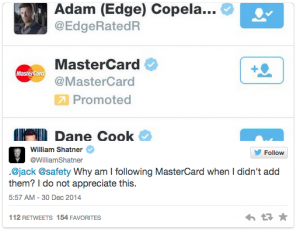
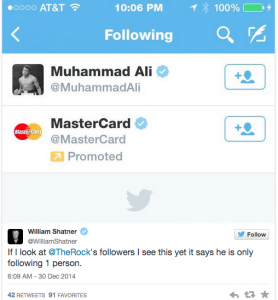 It seems people do not appreciate being made to look like they follow someone they don’t.
It seems people do not appreciate being made to look like they follow someone they don’t.
It is pretty misleading, although the account does say that it is being promoted. When looking through famous people’s followers at this time it appeared that nearly everyone looked like they followed MasterCard… from Barack Obama to their main competitor ‘Visa’ !!!
And this did not have the desired effect
References
Baines, P. Fill,C and Page, K. (2011). Digital Marketing. In:Marketing. 3rd ed. Oxford: Oxford University Press. p 625 – 629.
Benson, B. (2015). New analytics homepage and quick promote now available. Available: https://blog.twitter.com/2015/new-analytics-homepage-and-quick-promote-now-available. Last accessed 19th April 2015.
Burton, S. and Soboleva, A. (2011) “Interactive or reactive? Marketing with Twitter”. Journal of Consumer Marketing. Vol. 28 (7). pp 491 – 499 ]
Ganguly, S. (2015). Why Social Media Advertising Is Set To Explode In The Next 3 Years. Available: http://marketingland.com/social-media-advertising-set-explode-next-3-years-121691. Last accessed 19th April 2015.
Harris, L & Dennis, C. (2011). Engaging Customers On Facebook.Journal of Consumer Behaviour . 10 (6), p 338-346.
Laurion, D. (2014). When to Consider Twitter Ads and the Difference Between Promoted Accounts and Promoted Tweets. Available: https://www.linkedin.com/pulse/20140625171530-79555391-when-to-consider-twitter-ads-and-the-difference-between-promoted-accounts-and-promoted-tweets. Last accessed 19th April 2015.
Sullivan, D. (2014). Twitter Ads Make It Seem Like People Follow Brands, Even If They Don’t. Available: http://marketingland.com/twitter-ads-following-list-112686. Last accessed 19th April 2015.
Twitter. (2015). Promoted Accounts. Available: https://business.twitter.com/solutions/promoted-accounts. Last accessed 19th April 2015.


